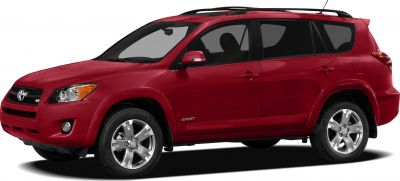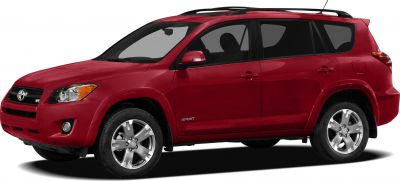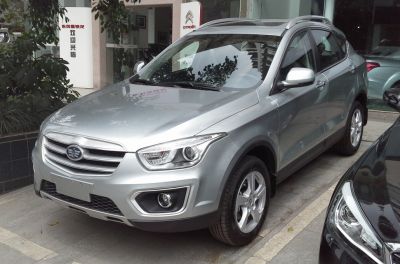 2001 Mitsubishi Outlander I Dimensions, Size & Specs
2001 Mitsubishi Outlander I Dimensions, Size & SpecsMeasurements of the 2001 Mitsubishi Outlander I, engineered for optimal performance and comfort
| Dimensions | |
|---|---|
| Length: | 4550 mm179.1 in14.9 ft |
| Width: | 1750 mm68.9 in5.7 ft |
| Height: | 1605-1684 mm63.2-66.3 in5.3-5.5 ft |
| Trunk Capacity: | 402-1708 liter14.2-60.3 cu ft |
| Trunk Capacity (Max): | 1705-1708 liter60.2-60.3 cu ft |
| Weight Specifications | |
| Curb Weight: | 1500-1595 kg3307-3516 lbs |
| Maximal permitted Weight: | 1995-2070 kg4398-4564 lbs |
| Tire Specifications | |
| Rims Sizes: | 16-inch rims:
|
| Tire Sizes: |
|
The Mitsubishi Outlander I, produced between 2001 and 2006, represents a versatile and practical SUV option for drivers seeking a compact yet spacious vehicle. Measuring 4550 mm (179 inches) in length and 1750 mm (69 inches) in width, this model provides a balanced footprint suitable for both urban and suburban driving. The height ranges between 1605 mm (63 inches) and 1684 mm (66.3 inches), allowing for a comfortable cabin with good headroom and commanding driving position.
With a curb weight varying from 1500 to 1595 kg (3307 to 3516 lbs) and a maximum weight range of 1995 to 2070 kg (4398 to 4562 lbs), the Outlander I delivers a stable and composed driving experience typical of early 2000s SUVs. The vehicle's flexible cargo capacity stands out as a key feature; the luggage area offers 402 liters (14.2 cubic feet) with rear seats upright and expands dramatically to between 1705 and 1708 liters (60.2 cubic feet) when the rear seats are folded down, catering to a wide range of transport needs.
Tire and rim options include 7J x 16-inch rims paired with tire sizes such as 215/60 R16, 215/55 R17, and 225/60 R16, offering a blend of comfort and capable traction for varied road conditions. These specifications illustrate the Outlander’s adaptability, making it a well-rounded choice for families and individuals who require a reliable SUV with respectable interior space and practical dimensions. Overall, the Mitsubishi Outlander I maintains its appeal as a compact SUV that blends functionality with manageable size and weight.
Discover the standout features that make the 2001 Mitsubishi Outlander I a leader in its class
Have a question? Please check our knowledgebase first.
The Mitsubishi Outlander I, produced from 2001 to 2006, measures 4550 mm (179.1 inches) in length, 1750 mm (68.9 inches) in width, and has a height ranging from 1605 mm to 1684 mm (63.2 to 66.3 inches), depending on the specific model variant or equipment.
The curb weight of the Mitsubishi Outlander I ranges between 1500 kg and 1595 kg (3307 to 3516 lbs), while its maximum permissible weight ranges from 1995 kg to 2070 kg (4399 to 4562 lbs). These weights influence the SUV's handling dynamics and fuel efficiency, with heavier variants potentially offering stability but possibly affecting acceleration and agility.
The Mitsubishi Outlander I offers a luggage capacity of approximately 402 liters (14.2 cubic feet) when rear seats are upright, which can be expanded significantly to between 1705 and 1708 liters (60.2 to 60.3 cubic feet) when the rear seats are folded down, providing versatile cargo space for various needs.
This generation of the Outlander typically comes with rims sized 7J x 16 or 16 inches, and tire sizes including 215/60 R16, 215/55 R17, and 225/60 R16. These tire dimensions support a balance between ride comfort and traction, with variations allowing for slight differences in road grip and driving feel.
A standard residential garage door is generally about 2400 mm (94.5 inches) wide and 2100 mm (82.7 inches) tall, so the Mitsubishi Outlander I, being 1750 mm (68.9 inches) wide and up to 1684 mm (66.3 inches) tall, will comfortably fit into a typical garage with adequate clearance on all sides.
The height variation in the Outlander I is mainly due to different trims, roof rails, and optional equipment or suspension setups. For example, models with roof rails or higher ground clearance suspensions tend to be taller, with 1684 mm (66.3 inches) representing the tallest configuration.
The Mitsubishi Outlander I replaced the Mitsubishi Airtrek, which shares a platform and similar body style but with slight dimensional differences. The Outlander generally offers a bit more refined dimensions focusing on improved interior space and luggage capacity while maintaining compact SUV size characteristics typical of early 2000s models.
When compared to rivals like the Honda CR-V or Toyota RAV4 from the same era, the Outlander I offers competitive length and width but stands out with a flexible luggage capacity of up to 1708 liters (60.3 cubic feet) with seats folded, which is often more than some competitors. Its exterior dimensions make it a practical choice for both city and suburban environments.
The moderate length of 4550 mm (179.1 inches) and modest width of 1750 mm (68.9 inches) make the Outlander I easy to maneuver in urban settings while providing enough cabin space for passengers. Its curb weight of up to 1595 kg (3516 lbs) offers a stable ride without compromising fuel efficiency excessively, making it a balanced SUV for everyday usability.
The Outlander I’s cargo capacity is noteworthy, offering 402 liters (14.2 cubic feet) with the rear seats upright for typical daily luggage needs, and expanding impressively to up to 1708 liters (60.3 cubic feet) when folding the seats. This spaciousness caters well to families, outdoor activities, or transporting bulky items, providing flexible storage solutions.
Discover similar sized cars.

| Production: | 2012-2014 |
|---|---|
| Model Year: | 2012 |
| Length: | 4575 mm180.1 in |
| Width: | 1816 mm71.5 in |
| Height: | 1684 mm66.3 in |

| Production: | 2008-2012 |
|---|---|
| Model Year: | 2009 |
| Length: | 4620 mm181.9 in |
| Width: | 1816 mm71.5 in |
| Height: | 1684 mm66.3 in |

| Production: | 2017-present |
|---|---|
| Model Year: | 2017 |
| Length: | 4620 mm181.9 in |
| Width: | 1820 mm71.7 in |
| Height: | 1695 mm66.7 in |

| Production: | 2013-2017 |
|---|---|
| Model Year: | 2013 |
| Length: | 4586 mm180.6 in |
| Width: | 1820 mm71.7 in |
| Height: | 1695 mm66.7 in |

| Production: | 2016-2018 |
|---|---|
| Model Year: | 2017 |
| Length: | 4595-4610 mm180.9-181.5 in |
| Width: | 1795 mm70.7 in |
| Height: | 1715-1735 mm67.5-68.3 in |
